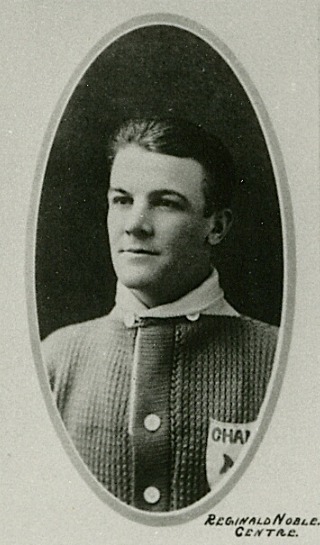
The Montreal Maroons were a professional ice hockey team in the National Hockey League (NHL). They played in the NHL from 1924 to 1938, winning the Stanley Cup in 1926 and 1935. They were the last non-Original Six team to win the Stanley Cup until the expansion Philadelphia Flyers won in 1974.

The St. Louis Eagles were a professional ice hockey team that played in the National Hockey League (NHL). Based in St. Louis, the Eagles played for only one year, the 1934–35 NHL season.
The Original Six are the teams that composed the National Hockey League (NHL) between 1942 and 1967. The six teams are the Boston Bruins, Chicago Black Hawks, Detroit Red Wings, Montreal Canadiens, New York Rangers, and Toronto Maple Leafs. After serving as the league's only teams for 25 seasons, they were joined by six new franchises in the 1967 NHL expansion.

The Victoria Cougars were a major league professional ice hockey team that played in the Pacific Coast Hockey Association (PCHA) from 1911 to 1924 under various names, and in the Western Hockey League (WHL) from 1924 to 1926. The team was based in Victoria, British Columbia, and won the Stanley Cup in 1925, becoming the final non-NHL team to win the Cup.
The 1926–27 NHL season was the tenth season of the National Hockey League. The success of the Boston Bruins and the Pittsburgh Pirates led the NHL to expand further within the United States. The league added three new teams: the Chicago Black Hawks, Detroit Cougars, and New York Rangers, to make a total of ten, split in two divisions. This resulted in teams based in Canada being in the minority for the first time. To stock the teams with players the new teams brought in players from the Western Hockey League, which folded in May 1926. This left the NHL in sole possession of hockey's top players, as well as sole control of hockey's top trophy, the Stanley Cup, which was won by the Ottawa Senators. This was the original Senators' eleventh and final Stanley Cup win. The Senators' first was in 1903.
The Western Canada Hockey League (WCHL), founded in 1921, was a major professional ice hockey league originally based in the prairies of Canada. It was renamed the Western Hockey League (WHL) in 1925 and disbanded in 1926.

Edward Reginald Noble was a Canadian professional ice hockey forward and defenceman who played 17 professional seasons in the National Hockey Association (NHA) and National Hockey League (NHL) for the Toronto Blueshirts, Montreal Canadiens, Toronto St. Pats, Montreal Maroons, Detroit Cougars, Detroit Falcons and Detroit Red Wings between 1916 and 1933. He was a three-time winner of the Stanley Cup, with Toronto and Montreal and was inducted into the Hockey Hall of Fame in 1962. He was also the last active player from the NHL's inaugural season, the NHA and the 1910s.
The 1961–62 NHL season was the 45th season of the National Hockey League (NHL). The Toronto Maple Leafs were the Stanley Cup champions as they defeated the Chicago Black Hawks four games to two.
The 1965–66 NHL season was the 49th season of the National Hockey League. Six teams each played 70 games. The Montreal Canadiens won their second consecutive Stanley Cup as they defeated the Detroit Red Wings four games to two in the final series.
The 1952–53 NHL season was the 36th season of the National Hockey League. The Montreal Canadiens were the Stanley Cup winners as they beat the Boston Bruins four games to one in the final series.
The Curse of 1940, also called Dutton's Curse, was a superstitious explanation for why the National Hockey League's (NHL) New York Rangers did not win the league's championship trophy, the Stanley Cup, from 1940 through 1994.
The 1977–78 NHL season was the 61st season of the National Hockey League. The Montreal Canadiens won their third Stanley Cup in a row, defeating the Boston Bruins four games to two in the Stanley Cup Finals.
The National Hockey League's American Division was formed after expansion in 1926. The division existed for 12 seasons until 1938.
The 1926–27 Chicago Black Hawks season was the team's first season. Chicago was awarded an NHL franchise. Most of the team's players came from the Portland Rosebuds of the Western Canada Hockey League, which had folded the previous season. The team would qualify for the playoffs in their first season, but lost in a 2-game total goal series.
The 1926–27 Detroit Cougars season was the first season of National Hockey League (NHL) hockey in Detroit, Michigan. The Detroit Cougars scored 28 points, finished at the bottom of the American Division as well as the league and failed to make the playoffs in their inaugural year.

The National Hockey League (NHL) was founded in 1917 following the demise of its predecessor league, the National Hockey Association (NHA). In an effort to remove Eddie Livingstone as owner of the Toronto Blueshirts, a majority of the NHA franchises suspended the NHA and formed the new NHL. The Quebec Bulldogs, while a member, did not operate in the NHL for the first two years. Instead the owners of the Toronto Arena Gardens operated a new Toronto franchise. While the NHL was intended as a temporary measure, the continuing dispute with Livingstone led to the four NHA owners meeting and making the suspension of the NHA permanent one year later.
The history of the Detroit Red Wings begins in 1926, when the franchise began play in the National Hockey League (NHL). The professional ice hockey club was founded as the Detroit Cougars on September 25, 1926, one of three teams to join the NHL in 1926. With the demise of the Western Canada Hockey League (WCHL), the rights to the players of the Victoria Cougars were purchased by a Detroit group led by Charles A. Hughes who kept the name "Cougars" for their NHL club. The new team struggled financially; in 1930, the Cougars changed their name to the Detroit Falcons, and after being bought out of receivership by James E. Norris were renamed as the Detroit Red Wings in 1932. The team played their first game on November 18, 1926, and won their first two Stanley Cup titles in 1936 and 1937. The Red Wings have won the Cup eleven times, more than any other American team in NHL history.
The Blackhawks–Red Wings rivalry is a historic rivalry in the National Hockey League (NHL) between the Chicago Blackhawks and Detroit Red Wings. Prior to the 2013–14 league-wide divisional realignment, it was the most intense rivalry in the Central Division during the post-lockout era. They represent the two largest metro areas in the Midwest and are only separated by a 280-mile stretch of road, mostly covered by I-94. The clubs began playing each other in 1926–27, during the inaugural season for both franchises. These two clubs have faced each other in more regular season games than any other two teams in NHL history, only the Bruins–Canadiens rivalry exceeds them in total games played when Stanley Cup playoff games are included.
Portland Rosebuds was the name of two professional men's ice hockey teams in Portland, Oregon. Both teams played their home games at the Portland Ice Arena. The first Rosebuds are notable for being the first American-based team to be allowed to compete for the Stanley Cup. The second Rosebuds are notable in that their roster was used to build the NHL expansion Chicago Blackhawks.
This is a complete alphabetic list of all players who won the Stanley Cup with years and total wins. The Stanley Cup was first awarded in 1893, and since 1926 it has been the championship trophy of the National Hockey League (NHL). The list includes all known players from each winning team from 1893 to 1923. Since 1924, all players whose names were actually engraved on the Stanley Cup are listed. The list also includes any player who qualified but whose name was not engraved on the Stanley Cup, and any player who did not qualify but who dressed in the playoffs.





